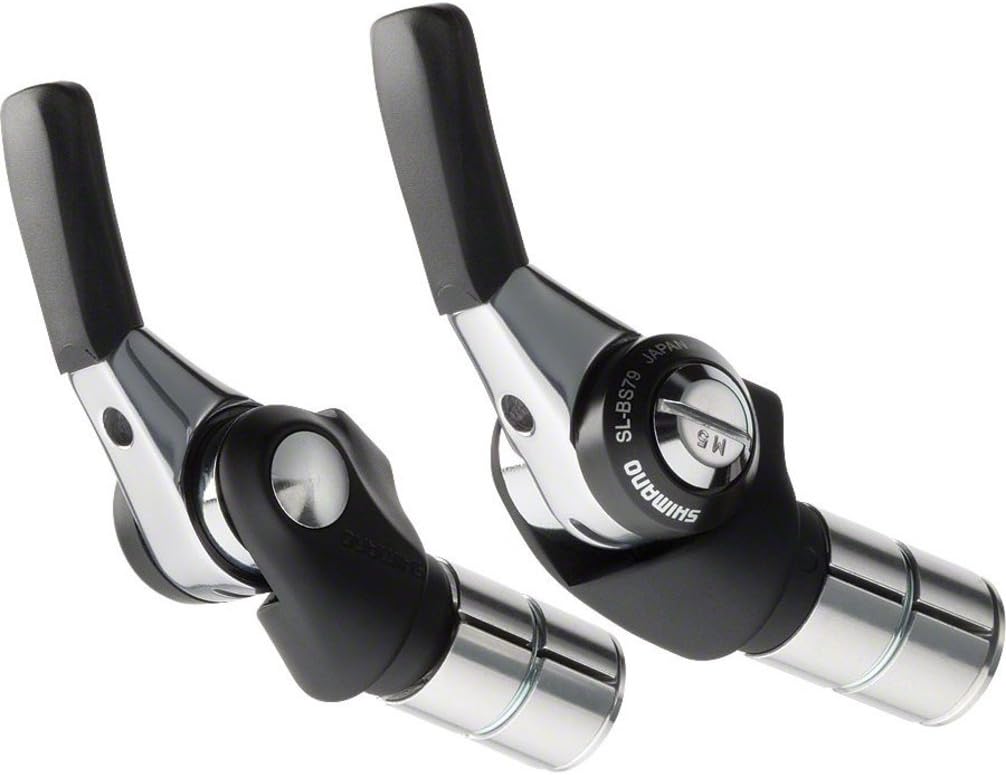
Are you tired of the standard integrated side shifters on most bikes? If so, you might be among the few—myself included—who felt confused by the options out there, did some research, and eventually decided to try bar-end shifters on my old touring bike. Life on two wheels brings so much vibrancy, and riding a bicycle is a privilege worth cherishing.
Bicycles are a mode of transportation found all around the world. Many of us can recall our first bike, the falls we took, and the liberating feeling that comes from exploring the world on two wheels. However, as we age, cycling transforms into something more than a childhood pastime.
Yet, there’s a nostalgic aspect to bikes of earlier eras: the gradual decline of bar-end shifters. While these shifters were once fashionable, they faced stiff competition from the early integrated side-shift models. Bar-end shifters can be particularly advantageous for riding steep trails or tackling long climbs, especially when quick gear changes aren’t necessary. On the flip side, I did find that it took some time to adjust to using them.
What is Bar End Shifters? Benefits, Use & Drawbacks
Bar-end shifters are gear shifters located at the ends of your handlebars, whether straight or drop bars. Also known as bar-end controls, these shifters allow you to change gears without losing contact with the handlebars. Their position ensures that the gear-shifting mechanism is simple, versatile, and effective. With bar-end shifters, you can shift gears quickly and effortlessly.
Additionally, having separate brake levers and shifters reduces wear and tear, making them less damage-prone.
Benefits
Bar-end shifters offer several benefits that might make you consider installing them. These shifters allow riders to completely control switching hand positions without needing to ride hands-free, allowing for better braking control.
With bar-end shifters, you can easily shift gears even when riding over rough terrain or steep inclines, even when you’re out of your seat. They represent a significant advancement in cycling technology, transforming the way riders interact with their bikes.
Use
Bar-end shifters are simple levers that control the cable tension for shifting gears. When you pull the lever up, it tightens the cable, engaging the derailleur. Conversely, pushing the lever down releases the cable. Each shifter is connected to a derailleur: the left shifter controls the front derailleur, while the right shifter operates the rear derailleur.
Unlike internal hub gears, you can only shift the derailleurs while the chain is moving forward, which means you must be pedaling at all times. It’s important to soft-pedal to prevent excess tension on the drivetrain during a shift.
Drawbacks
Every technical component has its own challenges. The placement of the shifters while riding your bike isn’t ideal; you’ll often need to take your hand off the handlebars to use them.
Additionally, if the shifter is damaged, the entire unit will have to be replaced, which can be quite costly.
Why Cyclists Prefer Bar End Shifters For Touring?

Cyclists who tackle tough, muddy trails often choose bar-end shifters because they’re super durable and reliable. Tourers love them for these reasons—they hold up well against rough conditions and don’t usually have mechanical issues, which is a big deal on long rides. Plus, if you happen to take a spill, bar-ends are pretty well-protected.
One cool feature is that you can switch from indexed to friction shifting. This means if something goes wrong with the gears, you can easily adjust and keep things running smoothly. They also work great with handlebar bags, making it simple to fix any chain rub without a hassle.
Using wider handlebars is a nice perk, too, as it gives you better steering control while keeping things light, even if you’ve got a front load. Overall, bar-end shifters are all about practicality and ease, making them a solid choice for anyone who loves to tour on their bike.
Bar End Shifters – Good or Bad? My Experience
After trying out different types of shifters, I realized that bar-end shifters are perfect for my long bike rides and mountain trails. They’re great for casual riding, but the shifting can sometimes be a bit off since they require more cables. I’ve noticed I occasionally need to readjust when shifting.
Another thing I found out is that it’s pretty easy to bump the levers with my knees when I’m standing on the pedals, so I’ve learned to be a bit more careful. Setting them up takes a bit more work than usual.
First, you have to install the brake levers and bar ends, and you really need to pay attention to how the cables are run. They don’t need a lot of maintenance, but it’s a good idea to check on them regularly to make sure everything’s in good shape.
How to Install Bar Ends Shifters?
If you are looking to install bar-end shifters on your old handlebars, follow this simple installation process. Bar-end shifters are typically mounted at the ends of triathlon or time trial handlebars, and they can also be found on drop handlebars.
First, install the shift levers and their bodies towards the end of the handlebars. You will need to remove the levers to access the body mounting bolts, and then you can reinstall them. Once the levers are back in place, push both shift levers as far as they will go.
The conical-shaped end of the bolt and shifter body will push into a set of wedges. These wedges will extend inside the handlebar and tighten securely. Next, thread the inner cable through the opening in the shift lever and continue through the opening in the body until it exits beneath and in front of the handlebar drop.
Pull the cable all the way through until it fits snugly in the lever hole. Make sure the housing is fully in the lever body, and then stick some tape on it to hold it to the handlebars. After that, just reinstall the cable housing, and you’re good to go!
3 Best Bar End Shifters for Super Smooth Shifting
1 ) SHIMANO Dura Ace 11 Speed Shifters
Most people might see the Shimano Dura-Ace 11-Speed Bar-End Shifters as old tech, but I’ve wanted these for ages, and they were totally worth it. I have no regrets! While they’re made for time trial bikes with ski bar-end shifters, they fit my bike perfectly.
First off, the feel of these shifters is amazing, making my rides way more enjoyable. They’re super well-built, giving my hands a solid, sturdy vibe. The shifting is really crisp, which surprised me as a rider.
They claim to switch between friction and indexing, but it turns out the friction option isn’t available.
Still, I decided to get them, and I’m glad I did. The installation was a bit of a hassle, but once they were on, clicking them was easy and confirmed that I had shifted gears. Plus, the kit has shifter housing, cables, and all the necessary hardware.
SHIMANO Dura-Ace 11-Speed Bar End Shifters: Check Its Price On Amazon!
2 ) Microshift 8-Speed Bar End Shifter Set
I put the Microshift 8-Speed Bar End Shifter Set on my mountain bike after converting it to drop bars. Since this was my first bike build, figuring out the brake cable and shifting was a bit nerve-wracking. But in the end, it all worked out well.
On the road, these shifters feel just as smooth as any Shimano bar-end shifters I’ve tried before. Normally, their prices are pretty decent, but I have to admit, the cost of these 8-speed shifters was a bit tough to stomach. Still, they were totally worth it. I’m sure they’ll last for years and probably be part of a bunch of bike builds before they finally wear out.
What I love most about these shifters is how simple they are. You can use them with pretty much any shifter system since they have options for both indexed and friction. I’m using them in friction mode, and they definitely feel like solid gear. No need to stress about breaking them or crashing into something, because they attach securely to the bars and are really durable.
Microshift 8-Speed Bar End Shifter Set: Check Price On Amazon!
3 ) SHIMANO Dura-Ace 10 Speed Double Bar End Shifters
As an experienced rider, I’ve enjoyed cruising on both the 8-speed and 9-speed Shimano bar-end shifters. The new Shimano Dura-Ace 10-Speed Double Bar End Shifters definitely hold their own. They’ve got that classic Shimano quality and finish that you’d expect. Setting them up isn’t tricky at all—pretty easy, actually. Once they’re on, they shift like a dream and operate smoothly.
There’s a big difference between the old 8-speed and 9-speed bar-ends and these new 10-speed ones. The rear shifter is fully indexed now, so there’s no friction mode at all. The front shifter still uses friction and works for 2 or 3 speeds, though.
One cool thing about these shifters is that you can shift without having to reach back, which is a real bonus when you’re in an aero position. They do feel a bit stiff, but they’re solid and well-made. Plus, they come with everything you need, including cables.
SHIMANO Dura-Ace 10 Speed Double Bar End Shifters: Check Its Price On Amazon!
Conclusion
Are you considering biking as a thrilling new hobby or gearing up for a competitive triathlon? Either way, bar-end shifters are a must-have for your cycling toolkit! These nifty components aren’t just an upgrade; their ergonomic benefits will elevate your riding experience.
Imagine cruising down the road, seamlessly shifting gears just when you need to. Bar-end shifters provide that kind of freedom, making it easier to adapt to any terrain or challenge ahead. Whether you’re aiming for leisurely weekend rides or intense training sessions, having the right gear at your fingertips transforms your ride into something special.
So, take the plunge! Equip your bike with bar-end shifters and watch your adventure unfold. What are you waiting for? Get set, and let’s hit the road in style!













Thank you for sharing